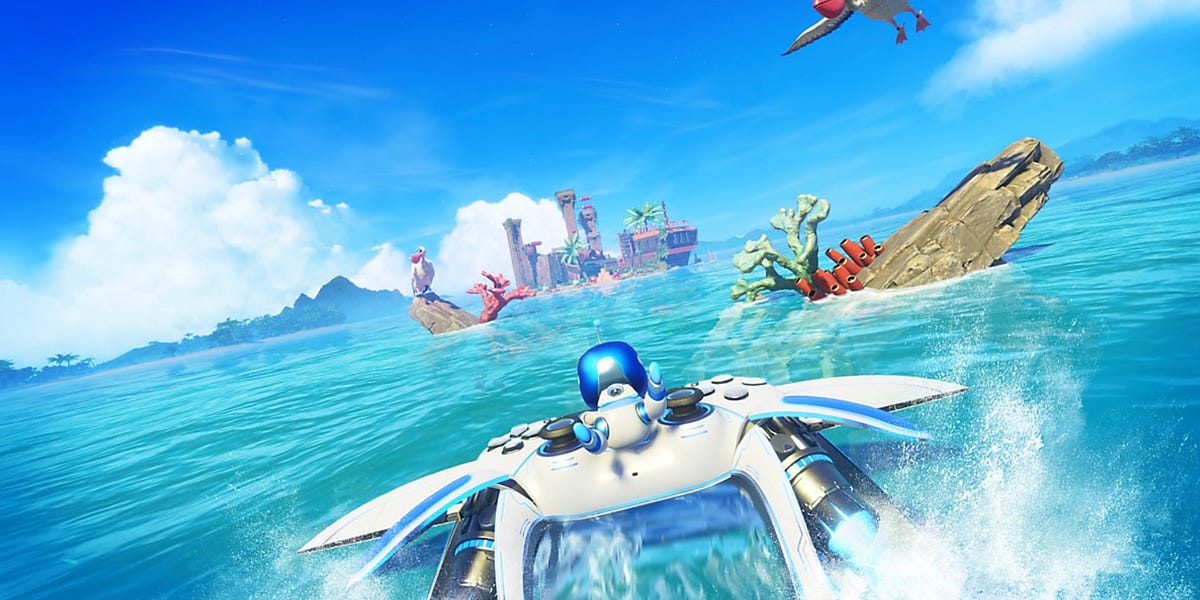Some interesting details here:
Nicholas Doucet early career
1 year of prototyping & studio-wide play sessions every 2 weeks
Why Team Asobi's boss was thanked in the Stellar Blade credits

 www.gamefile.news
www.gamefile.news
Nicholas Doucet early career
In the early 2000s, before he joined PlayStation, Doucet worked on Lego video games, a career he wasn’t initially thrilled about.
“The day I actually entered Lego, I remember being a little bit disappointed at the time. I was like 20 or 21. And I was thinking, ‘I want to work on kind of hardcore games.’”
He was a young man enjoying the likes of Metal Gear Solid and here he was about to work on Lego Rock Raiders and Lego Alpha Team for the original PlayStation and Game Boy Color. Not quite as cool, he figured.
As he did the work, he warmed to it, because he realized how impactful it could be.
“I started to have quite a lot of pleasure watching the reaction of kids and audiences that just never touched video games,” he said.
1 year of prototyping & studio-wide play sessions every 2 weeks
There's a big chunk of time that is ring-fenced for prototyping, Doucet said.
He estimates that, for Astro Bot, Team Asobi probably spent about “one year prototyping, one year in production, turning all of these prototypes into the game, and then one year polishing.”
“We have two-week cycles where we prototype very rapidly lots of mechanics. We get together every two weeks and everybody plays the game.
The studio's DualSense 2.0 team's quest for controller-based gameplay ideas“We have a kind of studio value that is playful,” he said. “And it means that we really want to treat the game as a toy as well as a game.”
Getting vintage hardware into Astro's PlayroomAfter the 2020 release of Astro’s Playroom, Team Asobi assembled a three- or four-person “DualSense 2.0” team to concoct new gameplay ideas that’d make use of the controller. Some of that work, including the aforementioned sponge concept, are going into Astro Bot. There’s also a mechanic where Astro can run his hand along a wall to find a secret, based on the relative roughness or smoothness of the controller’s haptic feedback. (Doucet said they use that concept just a few times in the game: “We don't want to overdo it.”)
Astro Bot’s nostalgia is focused on some 150 PlayStation-inspired character cameos (among 300 collectible bots). The PS5 itself is rendered as a spaceship for Astro to use, the PS5 controller is a glider. The previous game, Astro’s Playroom, included virtual versions of dozens of PlayStation consoles and peripherals, an idea not being replicated this time. About that virtual gear, Doucet said some of the source material scanned into the game was from his personal collection, some the team had to find and buy. More recent devices were rendered based on Sony’s own industrial data.
Why Team Asobi's boss was thanked in the Stellar Blade credits
Doucet is thanked in the credits of two other 2025 PlayStation exclusives, the externally-developed but Sony-published Rise of the Ronin and Stellar Blade. Doucet recalls his team sharing insights about the PS5 controller’s haptics with the Stellar Blade team. Also: “We are all like one big group, and we do comment and play each other's builds.”

How PlayStation engineered its next great game
The making of Astro Bot and the "love story" it's part of. Plus: Details on Sony's other big 2024 family game, Lego Horizon Adventures.




